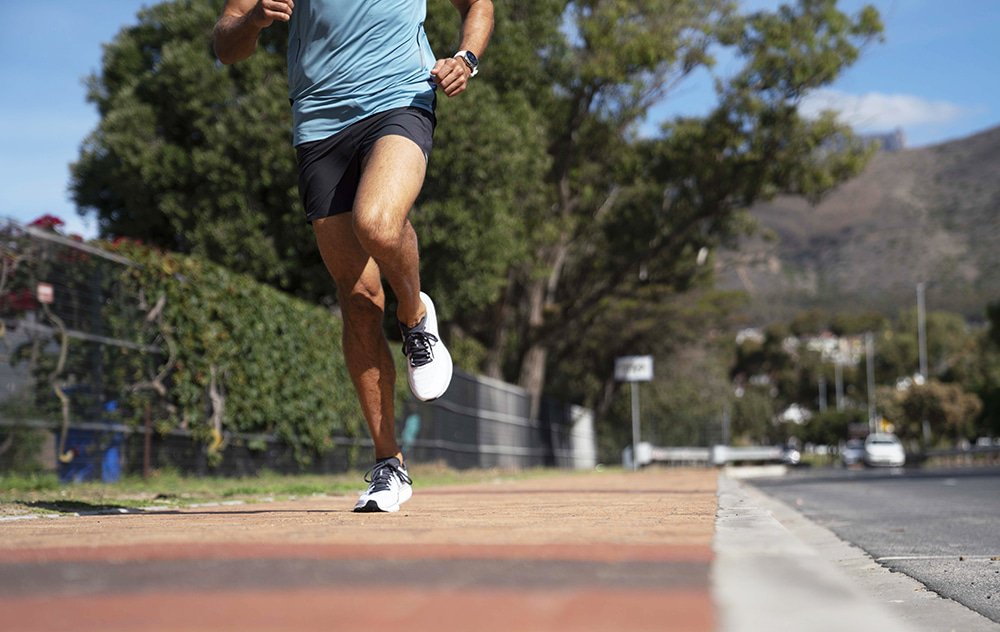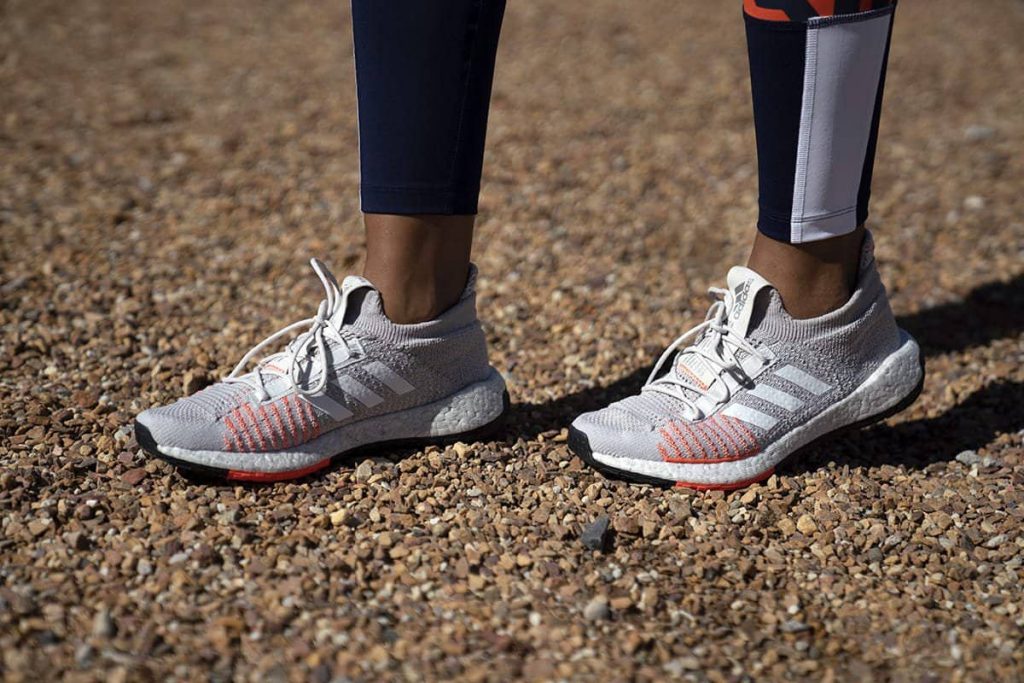8 Key Tips For Smashing Your First Half Marathon
Thinking about your first 21.1km? Go ahead and sign up, then follow this expert-backed advice.
- Finding and following the right type of training plan for you is an essential component to a successful first half marathon.
- Test out gear and fuelling options beforehand so that there are no surprises come race day.
- Listen to your body during half marathon training – if you feel an injury coming on, address it right away so that it doesn’t sideline you later.
The half marathon can be the perfect distance: 21.1km is long enough to make you feel super accomplished but short enough to wrap your brain (and schedule) around. And yes, you can finish one.
“Just about anyone can do a half marathon with the proper training,” says Mark Coogan, team New Balance coach and former Olympic marathoner. “The key is preparing your body for the distance without overdoing it and causing injury.”
A lot of beginners end up falling on two ends of the training spectrum: They either commit to their half marathon training plan too much (ignoring their bodies and escalating an injury that could have been avoided) or they don’t commit enough (Coogan says you should be working out six days a week). But if you find that sweet spot, the finish line will be in sight before you know it. Follow our half marathon training advice and tips to get there in one victorious, badass piece.
How Should I Train for My First Half Marathon?
The key to successful half marathon training is consistently putting in enough weekly mileage to get your body accustomed to running for long periods of time. Newer runners may start with 16-24 kilometres per week total and gradually build to a peak week of 40-48 kilometres. More experienced runners may start at 40 or more kilometres per week and peak at 65 or more kilometres.
Look at races at least two months from now. “If you can run a 5K now, then you can run a half marathon in eight weeks,” Coogan says. “But the ideal plan is three to four months long, which gives you a buffer if you get sick, injured, or slammed at work.” Basically, plan for life to get in the way – as it so often does – so you don’t stress yourself out.
Can’t run a 5K just yet? Most beginner half marathon training plans start with a 4km run in the first week, so you’ll want to work your way up to that first. “Lots of people run into problems like shin splints when they first start, so get past that point first,” Coogan says.
To build up, former Olympian and running coach Jeff Galloway suggests running at least three times a week. “Weekday runs should average about 30 minutes,” he says. Then, you can work your way up to a 5km run on the weekend.
The most important part of your training is a weekly long run at an easy “conversational” pace that gradually increases in distance, week over week, to build your strength and endurance. If you gradually build to being comfortable on long runs of 16 or 17 kilometres, you’ll have what it takes to go 21.1km on race day.

How Do I Choose the Right Half Marathon Training Plan?
Now that you’ve chosen your half marathon, it’s time to settle on your training plan. (Get the Runner’s World half-marathon training plans here.) A solid half marathon training plan should have these four things: cross-training days, a long run that’s at least 16 kilometres, a rest day immediately following your long run, and a taper. “Cross-training allows you to work on your cardio without the constant pounding of running, long runs give you the confidence you need on race day, and rest days are crucial to recovery,” Coogan says. (More on the taper later.) A lot of training plans leave the cross-training decision up to you, but Coogan suggests swimming, cycling, or using the elliptical or Stairmaster.
And there’s no need to worry about not hitting that 21.1km before the half marathon: “If you can run 16 kilometres, you can run 21.1 on race day,” Coogan says. “Besides, the race wouldn’t be as exciting if you hit 21.1km a couple of weeks before.”
To help you get started, below are our most popular half-marathon training plans. If you are a more advanced runner or looking to break a specific time goal, check out our advanced and other half-marathon training plans here.
- Conquer A Hilly Half Marathon in 12 Weeks: Download
- Sub-2 Half Marathon: Download
- 12-Week Half-Marathon Plan For Beginners: Download
- 8-Week Novice & Experienced Half-Marathon Training Programmes: Download Novice, Download Experienced
What Should I Wear for a Half Marathon?
Running may not always feel easy in the moment, but it’s one of the easiest sports to access. It’s cheap (once you swallow that race registration fee), you can do it anywhere, and it requires almost no equipment.
But as anyone who has run in poorly fitted shoes will tell you, gear still makes a huge difference. “Go to a specialty running shop that analyses your form and helps you choose the best shoe for you,” Coogan says. Keep in mind that your friend’s favourite might not be your favourite. Some people prefer to run as close to barefoot as possible and others like shoes that resemble Spice Girl platforms. Allow yourself to find the one that works best for you.
You’ll also want to test every pair of leggings, headphones, and socks before race day – the last thing you want is an unexpected tag scratching your lower-back for two-plus hours, or socks that fall down every four seconds. Never race in something you’ve never worn before.

What Should I Eat During a Half Marathon?
While we’re at it, the same goes for fuelling. Don’t experiment with new energy gels, caffeine, or breakfast foods on race day. Your training runs are just as much about preparing your body as they are about finding the fuel and gear that work well for you. Load up on caffeinated gels without testing them first, and you could end up spending more time in the porta-potty than you planned for.
Your plan: Experiment with these perfectly carb-y breakfasts for runners, then aim to consume about 30 to 60 grams of carbs per hour while you’re running. Your running-course carbs should come from sources that are easy to eat, digest, and carry.
How Much Should I Drink During a Half?
You need to drink enough before, during, and after your run to perform your best. Indeed, just two percent dehydration can slow you down. It’s especially important to stay on top of hydration during warm summer months, when you sweat more. While some experts recommend you stay hydrated by simply drinking when thirsty, others suggest you develop a customised plan by performing a sweat test—that is, weighing yourself before and after exercise. Any weight loss corresponds with fluid loss, so try to drink enough to replenish that weight. Before you run, you should have 177-240ml of water, sports drink, or even coffee. While you are running, you should aim to take in 88-177ml every 15 to 20 minutes. Water is usually fine for runs in the 30- to 60-minute range. After runs longer than that, and you should consider a sports drink with carbs and electrolytes to replenish sodium.
RELATED: 6 Key Signs of Dehydration You Should Know About
How Do I Avoid Injury When Training for a Half Marathon?
Committing to your training plan is important, but it’s not more important than avoiding injury. “Most injuries can be addressed quickly early on, but in order to do that you need to be honest with yourself if something hurts,” Coogan says. Ultimately, missing one workout won’t ruin your race. What will? Being sidelined for a month because you ignored an injury that got worse. (Trust us, this really sucks.)
How to Prepare for a Long Run
The long run, usually on Saturday or Sunday, is arguably the most important part of any half-marathon training plan. (Coogan suggests Saturday, so you can rest on Sunday, but that depends on the type of work you do and your schedule.) Everything you’re doing earlier in the week – speed work, cross-training, hill work – is designed to build up to this long run (no pressure!).
If you can, choose a route similar to the race you’ll be running. This won’t always be possible if you’re doing a destination race, but don’t hit the treadmill for every single run. Yes, even if it’s raining. “You need to make sure you have the right gear (and mindset) for any conditions you might encounter on race day,” Coogan says.
And don’t underestimate the importance of pacing: “The most common mistake runners make is going out too fast – then crashing and burning,” Galloway says. “If you’ve raced a couple of 5Ks, aim to run three to four minutes per 1.5km slower on your long runs and on race day.”

When Should I Stop Running Before a Half Marathon?
A taper will be part of any solid training plan, but it’s worth explaining why it’s important. “The taper allows your body to recover from the training that you’ve put in, which sets you up for peak energy on race day,” Coogan says. “Tapering doesn’t mean that you stop training, it only means you cut back two weeks before the race.” Don’t worry, after months of increasing your mileage every week, you’ll probably appreciate this, and feel as ready as ever on race day.
READ MORE ON: 21-1km half-marathon training

